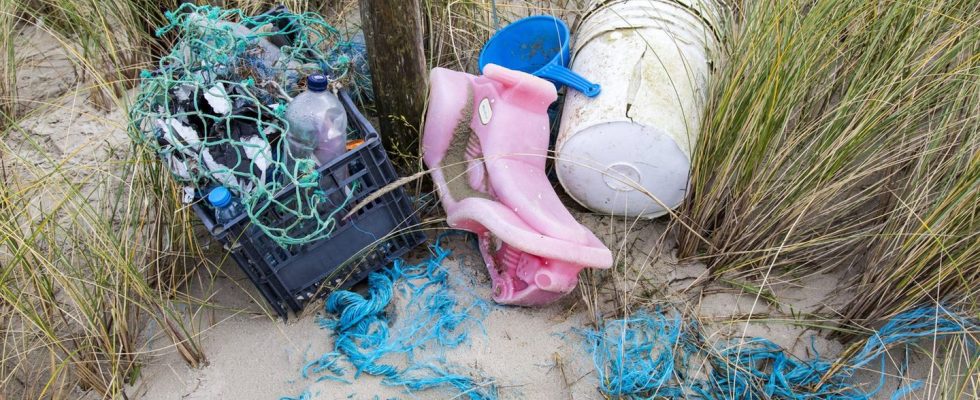environmental Protection
Plastic waste: How oceans and beaches become garbage dumps
Plastic waste on the North Sea island of Spiekeroog. Some of the waste also drifts into uninhabited areas.
© Imago Images
An untouched beach is the ideal – but the reality is that in many places there is plastic waste in the sea and in the sand. And even uninhabited areas of the world suffer from man-made waste.
White sand and blue sea are probably the holiday scenery par excellence for many people. But what if there are plastic bags floating in the waves and disposable bottles lying in the dunes? Plastic waste in the oceans is a massive environmental problem. More and more people are noticing this – but even those who want to help have to be careful.
The exact amount of plastic waste in the oceans is difficult to quantify. Scientists estimate that between 4.8 and 12.7 million tons of plastic waste end up in the oceans globally every year. That’s roughly the equivalent of one truckload per minute. Materials such as rubber, metals, glass or wood are also found in the seas. But plastics are the most common with a share of around 75 percent.
Ghost nets endanger fish – and end up on the beach
“We have known for 20 years that plastic waste is accumulating massively on seas and beaches. But for a few years now it has really been impossible to overlook, especially for tourists,” says Manfred Santen from the environmental organization Greenpeace. “On Sylt or, for example, on uninhabited Halligen, it is primarily garbage from shipping and fishing, i.e. the remains of some nets, nylon nets that are lost by some fishing boats, for example. That’s dramatic.” The so-called ghost nets are a threat to fish and other animals in the sea. Eventually they would end up on the beach. “That makes up about 50 percent of the garbage on the North Sea in Germany,” says Santen.
Because plastics decompose very slowly, it can take centuries for the material to be broken down by physical, chemical and biological processes in the oceans, according to the Environment Department. It is not known how long plastics remain in the environment. Garbage can travel long distances in the sea due to wind or waves. Some plastic bottles even end up in areas that are not inhabited at all – for example on uninhabited islands in the polar regions and in the Arctic ice.
The Alfred Wegener Institute, Helmholtz Center for Polar and Marine Research, has been collecting and evaluating washed-up plastic waste on the beaches of Spitsbergen in the North Atlantic for five years. Accordingly, a third of the clearly identifiable plastic waste comes from Europe, a large part of it from Germany.
Plastic waste ends up in uninhabited areas
And also in Germany’s seas themselves, waste that doesn’t belong there keeps ending up. This is also the case on the North Sea island of Mellum near Wilhelmshaven. Every two years, volunteers collect rubbish there to get an idea of the situation. Around 13 cubic meters of rubbish regularly accumulates, reports Mathias Heckroth, managing director of the Mellumrat, an association that takes care of nature conservation on the dune island on behalf of the national park administration.
“75 percent are plastic items. You can find the strangest things on the beach. From a solar lamp to a cleaning bucket to leftover paint.” Mellum is uninhabited – so the rubbish washes up over the sea and poses a risk to the animals. “Ground-breeding species build up remains of nets in their nests,” says Heckroth. “The young birds are regularly strangled.”
Many holidaymakers see the problem and want to help, but this can also pose a danger to birds: environmentalists warn against simply collecting plastic waste in nature reserves. “Many people see rubbish and then leave the paths and go to nature reserves where birds breed,” says Swaantje Fock from the Wittbülten National Park House on the North Sea island of Spiekeroog. “It’s great that people’s awareness is growing and they want to do something, but bird protection comes first.”
“The North Sea Book”
Visual reading: everything you always wanted to know about the North Sea
The Nature Conservation Union (Nabu) advises holidaymakers to stay on the paths. “The rule of thumb is: always pick up rubbish where I am, but please don’t go anywhere else,” says Stefanie Eilers, first chairwoman of Nabu Wilhelmshaven. If you see rubbish in nature reserves, you should contact the city’s nature conservation associations.


